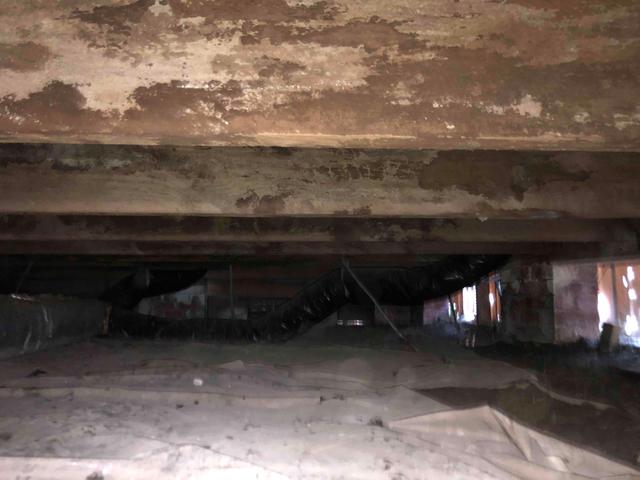
Mold and Mildew in the Crawl Space
This crawl space has a major moisture problem, and mold and mildew have grown on to the wooden joists and girders. Mold spores will grow on any organic materials within the crawl space, so long as the relative humidity is above 60%, and the temperature is above 70 degrees Fahrenheit. Mold will give off a musty odor that will rise into the floors above, and the spores that find their way up into the home can irritate those with allergies and can cause asthma from prolonged exposure.
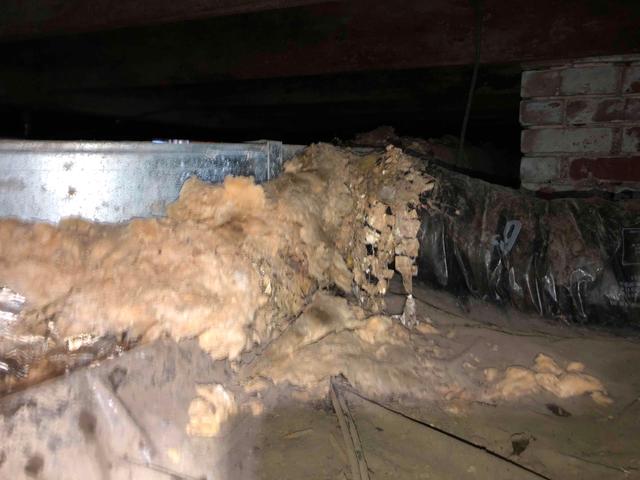
Ruined Fiberglass Insulation
Fiberglass insulation has fallen out of the floor joists and deteriorated in this crawl space. The fiberglass acts as a sponge, absorbing moisture from the crawl space air and sagging out of position. Water droplets pull apart the fine glass fibers and gravity pulls the heavy insulation downwards, rendering it useless.
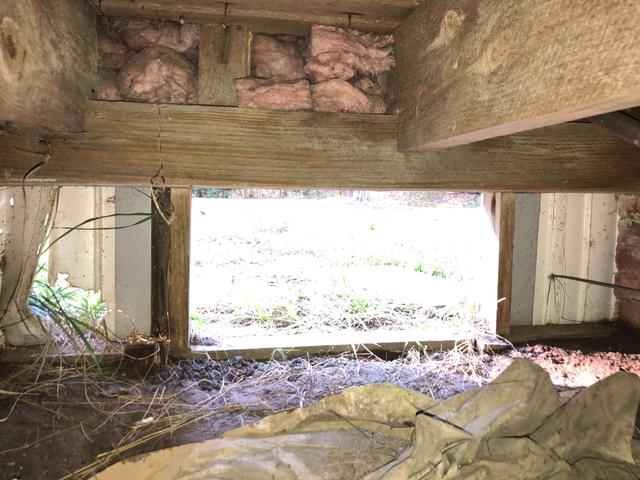
Crawl Space Entrance
The entrance to this crawl space was covered using only a wooden board. The board does not stop moisture and air from leaking in. Over time, this cover will become warped and damaged by the ever-changing weather and storms. Outside influence entering the crawl space will raise the relative humidity. The high moisture content may cause wood rot, mold and mildew growth, structural damage, and puddles. This damp and dark environment is also perfect for creepy critters and creatures to set up home.
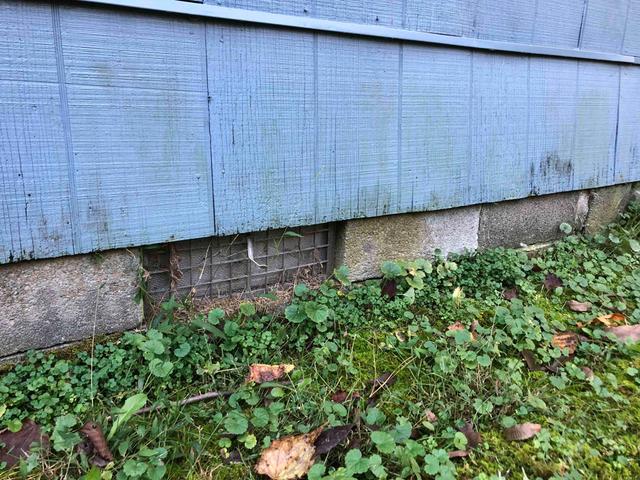
Open Vents on Foundation Walls
Open vents like the ones found in this crawl space allow outside air and moisture to freely invade the space, raising the relative humidity and inviting mold spores to move in. The idea behind these vents was to help air out the crawl space, allowing it to essentially dry itself. Instead, it creates this dark and damp underbelly, perfect for critters and mold growth.
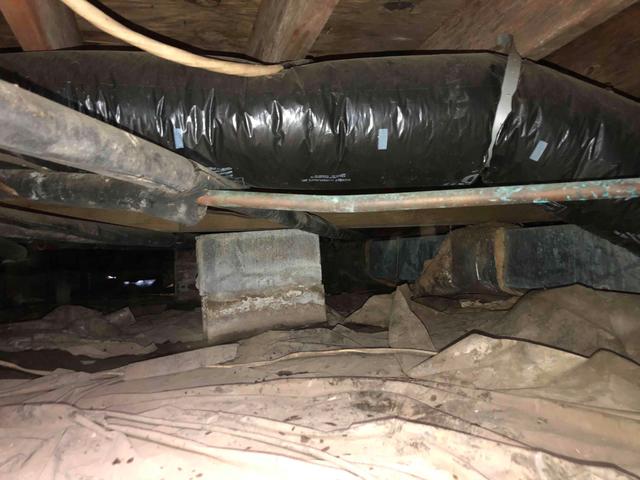
A Failed Vapor Barrier
The flimsy, easily torn 6-mil vapor barrier found within this crawl space is often used in Hudgins, VA crawl spaces during construction. It offers little protection was the earth's moisture, especially when it becomes ripped and shoved to the sides of the crawl space, exposing gaps and holes where moisture can rise, elevating the relative humidity with warmer temperatures.


